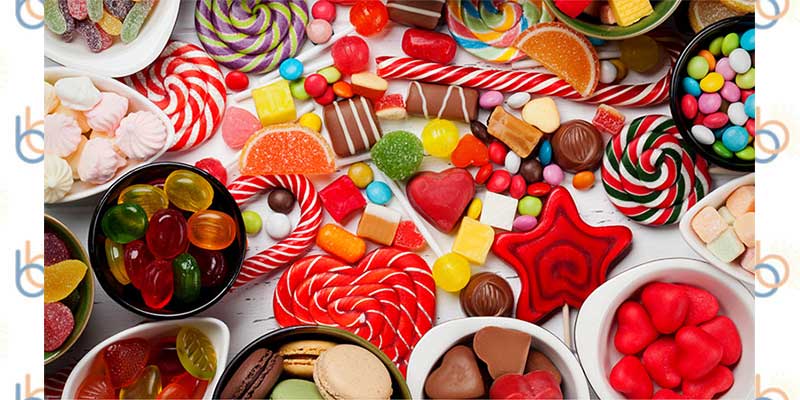Today in History
National Candy Month!

Did you know that June is National Candy Month? Talk about a sweet celebration. June is the month we celebrate all things sugar. Beyond its incredible taste, sugar is actually a fascinating molecule with some pretty remarkable scientific properties. Let’s take a closer look at what makes sugar such a special substance in our lives.
The molecule which we call sugar is officially known as sucrose. There are several different kinds of sugar molecules. Sucrose is actually a combination of two of them: fructose and glucose. Fructose is found in fruit and honey, and gives things like apples, oranges, and bananas their sweetness. Believe it or not, fructose is sweeter than sucrose! Glucose is often found in grains like wheat, rice, and corn, and is not as sweet as either fructose or sucrose. Another kind of sugar is lactose, the sweet molecule found in animal milk, perfect for growing babies who need lots of nutrition for healthy development. Lactose is the least sweet of the four major sugars, probably because it’s meant mostly for infants to eat.
So where does sucrose come from? Certain plants like sugar cane and sugar beets produce sucrose instead of fructose or glucose alone, combining the molecules and creating a more complex and pleasing flavor. Their juices are boiled, leaving sugar crystals behind. The byproduct of making sugar is called molasses, a thick syrupy substance with a smoky, complex flavor. Originally thrown away, molasses has become a staple of many cuisines for its distinct taste. White sugar contains no molasses, but brown sugar has some of the molasses mixed into it, creating a deeper flavor and adding moisture. Many baking recipes call for a mix of both white and brown sugars in various proportions. Products that only use white sugar tend to by dryer and more brittle, like sugar cookies or shortbread. Products that use mostly brown sugar tend to be chewier and sometimes stickier, like chocolate chip cookies or Dutch apple pie.
Candy makers, or confectioners as they’re know, have found many interesting ways to cook with sugar. By mixing sugar with water, flavorings, and other ingredients, and then heating and cooling their concoctions to various temperatures, they can produce different textures to the candy they make. Sometimes it can be stretchy and chewy like taffy, or hard and clear like lollipops. Which candy contains the most sugar? That would be cotton candy, or spun sugar. It’s about as pure a sugary candy as you can find! There’s actually a lot of science that goes into candy making, and confectioners use many of the same tools that scientists do when creating experiments in a lab!
So, what do you think? Interested in turning your home kitchen into a candy laboratory? There are lots of experiments you can do to learn more about the cool properties of sugar! Be sure to share any tasty results with your family, that way they can celebrate National Candy Month with you!


